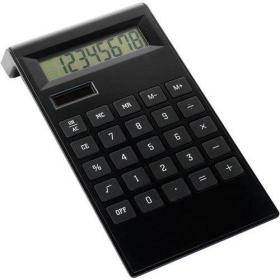

Of course, if you opt for more withholding and a bigger refund, you're effectively giving the government a loan of the extra money that’s withheld from each paycheck. Each of your paychecks may be smaller, but you’re more likely to get a tax refund and less likely to have tax liability when you fill out your tax return. If the idea of a big one-off bill from the IRS scares you, then you can err on the side of caution and adjust your withholding. That would mean that instead of getting a tax refund, you would owe money. The downside to maximizing each paycheck is that you might end up with a bigger tax bill if, come April, you haven't had enough withheld to cover your tax liability for the year. One way to manage your tax bill is by adjusting your withholdings.

The new version also includes a five-step process for indicating additional income, entering dollar amounts, claiming dependents and entering personal information. Instead, filers are required to enter annual dollar amounts for things such as total annual taxable wages, non-wage income and itemized and other deductions. Additionally, it removes the option to claim personal and/or dependency exemptions. It's important to note that while past versions of the W-4 allowed you to claim allowances, the current version doesn't. When it comes to tax withholdings, employees face a trade-off between bigger paychecks and a smaller tax bill. If you think you qualify for this exemption, you can indicate this on your W-4 Form. This year, you expect to receive a refund of all federal income tax withheld because you expect to have zero tax liability again.In the previous tax year, you received a refund of all federal income tax withheld from your paycheck because you had zero tax liability.To be exempt, you must meet both of the following criteria: employer have federal income taxes withheld from their paychecks, but some people are exempt.
#Free calculator update
If you do make any changes, your employer has to update your paychecks to reflect those changes. You have to fill out this form and submit it to your employer whenever you start a new job, but you may also need to re-submit it after a major life change, like a marriage. It's your employer's responsibility to withhold this money based on the information you provide in your Form W-4. The federal government collects your income tax payments gradually throughout the year by taking directly from each of your paychecks. Tax withholding is the money that comes out of your paycheck in order to pay taxes, with the biggest one being income taxes. That’s where our paycheck calculator comes in. Because of the numerous taxes withheld and the differing rates, it can be tough to figure out how much you’ll take home. That’s because your employer withholds taxes from each paycheck, lowering your overall pay. But calculating your weekly take-home pay isn’t a simple matter of multiplying your hourly wage by the number of hours you’ll work each week, or dividing your annual salary by 52. When you start a new job or get a raise, you’ll agree to either an hourly wage or an annual salary. How Your Paycheck Works: Income Tax Withholding states don't impose their own income tax for tax year 2022. real median household income (adjusted for inflation) in 2021 was $70,784. Federal income tax rates range from 10% up to a top marginal rate of 37%.To get an invitation to apply, your CRS score must be above the minimum points score of your round of invitations (cut-off scores may vary each round). you were invited to apply for permanent residence, and want to see if a change to your profile may affect your CRS score.you have not filled out an Express Entry profile but you’d like to see what your Comprehensive Ranking System (CRS) score might be if you do or.you’re eligible for at least 1 Express Entry program and.The CRS is a points-based system that we use to assess and score your profile and rank it in the Express Entry pool. This tool will help you calculate your Comprehensive Ranking System (CRS) score based on the answers you provide below. This tool will be updated from time to time in accordance with changes to the Ministerial Instructions governing Express Entry. In the event of any discrepancy between the results of this questionnaire and that provided by the Express Entry electronic system, the results provided by the system shall govern, in accordance with provisions of the Immigration and Refugee Protection Act, the Immigration and Refugee Protection Regulations, and Minister's Instructions issued under IRPA s.10.3. Legal Disclaimer: This tool is intended solely for general guidance and reference purposes.


 0 kommentar(er)
0 kommentar(er)
